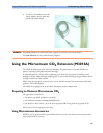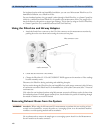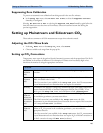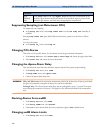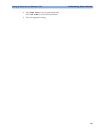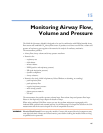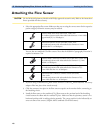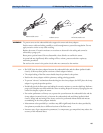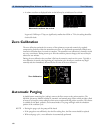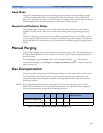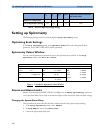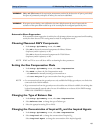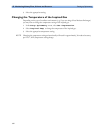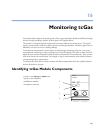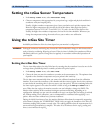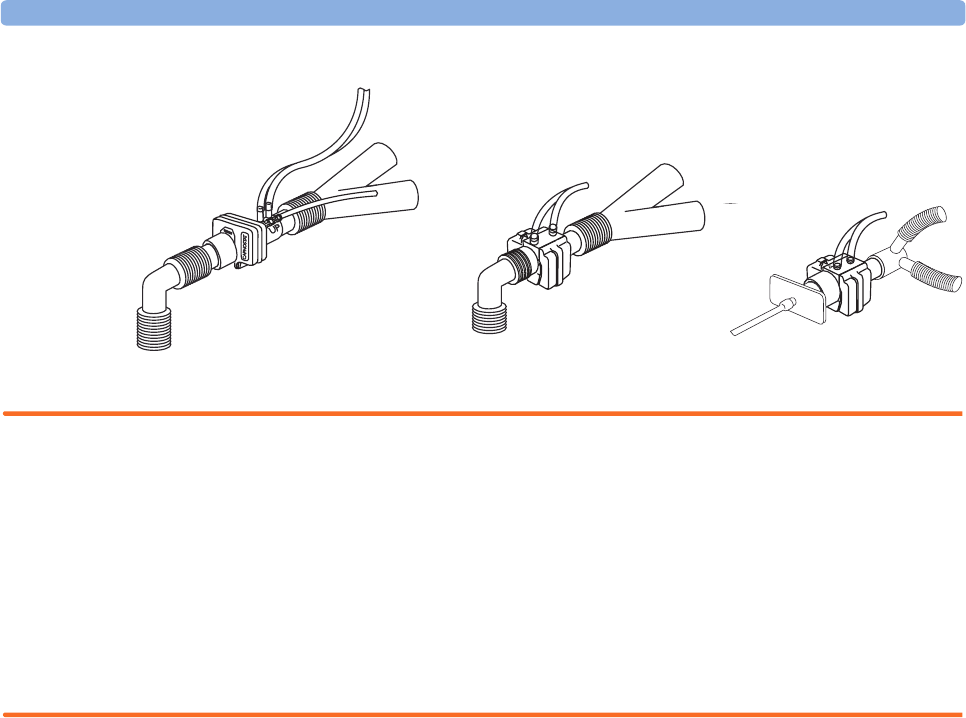
Attaching the Flow Sensor 15 Monitoring Airway Flow, Volume and Pressure
189
WARNING To prevent stress on the endotrachial tube, support the sensor and airway adapter.
Position sensor cables and tubing carefully to avoid entanglement or potential strangulation. Do not
apply excessive tension to any cable or tubing.
Replace the sensor, if excessive moisture or secretions are observed in the tubing and cannot be
removed by a purge cycle.
Reuse poses a patient hazard. Do not disassemble, clean, disinfect or sterilize the sensor.
A system leak may significantly affect readings of flow, volume, pressure and other respiratory
mechanics parameters.
Do not leave the sensor in the patient circuit when not connected to the monitor.
NOTE • Do NOT place the airway adapter between the endotrachial tube and the elbow (pediatric/adult
circuit), as this may allow patient secretions to block adapter windows.
• The striped tubing of the flow sensor should always be proximal to the patient.
• Position the airway adapter with the spirometry tubing pointing upwards.
• To prevent “rain-out” and moisture from draining into the airway adapter, do NOT place the airway
adapter in a gravity dependent position.
• Periodically check the flow sensor and tubing for excessive moisture or secretion build up. Perform a
purge cycle if droplets are visible within the sensor or tubing. Repeat if necessary. If purging does not
remove the droplets, replace the sensor.
• For routine performance of airway care, separate the system between the endotrachial tube and the
airway adapter (neonatal circuit), or between the endotracheal tube and elbow (pediatric/adult
circuit). Lavage and suctioning of the airway can then be performed without fluids and mucous
accumulating on the airway adapter windows.
• Measurement values provided by a ventilator may differ significantly from the values provided by
the spirometry module, due to different locations of the flow sensor.
• Incorrect entry of gas compensation parameters (i.e. temperature, gas composition) may reduce the
accuracy of the measured values.
Pediatric/adult sensor
Pediatric sensor Infant/Neonatal sensor



